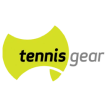A tennis philosophy for players young and old

Hello and welcome to the 21st issue of Tennis inbox. This week we’ve got ball troubles for Wilson, a player who figured out a way to improve by not dreaming big, and an updated position on the PTPA. Read on to find out more.
A damp and rainy week in Paris
The conditions in Paris have been dreary and depressing to say the least. The coverage from Roland-Garros looks as if someone’s put a slight, gray-colored filter over it. The sun has rarely been shining.

Yet while players have complained about the weather, more have taken issue with the new tennis balls. Wilson has taken over from Babolat this year in providing the tournament balls and a few players are not happy. Namely: Rafael Nadal. Talking about the new balls, Nadal told journalists in a press conference:
“I think not a good ball to play on clay, honestly. That is my personal opinion. Is (sic) not the right ball to play on a clay court.”
Commenting on their future use, Nadal added:
“I really believe that the organization need to take a look at that for the next couple of years, for the health of the players too, because the ball is super heavy. (It) becomes dangerous for the elbow and for the shoulders, I think.”
Dominic Thiem agreed with Nadal’s sentiments, saying:
“I practiced two days at home with the ball. Now, of course, here. I’m a little bit sad because the Babolat at Roland Garros, it was my favourite ball, it was perfect. Obviously it was the ball from my racket company. (It) was fast, was taking spin incredibly well. But the Wilson ball is good, as well. It’s just a little bit slower. It gets a little bit bigger after a while.”
Combine this heavier, slower ball with the damp fall weather in early October, and you’ve got some unique conditions for the French Open. (Which is usually played in late May/early June.)
Look for these heavier conditions to favor players who play a little flatter and hit through the ball. Traditional clay experts might find that the advantages that they’re normally used to receiving at Roland-Garros have been muted.
A prime example of this was when Robin Soderling defeated Rafael Nadal in the 2009 French Open. The damp and wet day on which they played made it difficult for Nadal to get his heavy forehand above and out of Soderling’s strike zone. Soderling’s flatter, more penetrating groundstrokes were also aided by the conditions. Soderling won that match 6–2, 6–7(2), 6–4, 7–6(2), handing Nadal his first loss in 31 matches at the French Open.
From what we’ve seen so far, conditions are impacting how athletes are playing (for example, we’re seeing a lot of dropshots—even for clay). If conditions persist, then Novak Djokovic might be the favorite on the men’s side as opposed to Rafael Nadal (or even Dominic Thiem). Yes, we know we’ve just committed a blasphemy against tennis’ conventions—but we’ll just have to wait and see.
Also keep an eye on 2015 champion Stan Wawrinka. Though he lost early in Rome to Italian wunderkind Lorenzo Musetti, Wawrinka played a couple Challenger tournaments on clay when the tours were just resuming. The tournaments must have helped him tune up his game, because he looks to be in impressive form—and the dampness of the courts at Roland-Garros will suit his powerful game well.
A decent TED Talk for players young and old
Quality tends to drop when there’s a constant need for content. And TED Talks have had a constant need for content since their inception. Sure, many of the talks delivered in the early years of TED have stood the test of time, and yes, more important ones come along every day. But if you look through the archives, you’ll see that more and more fringe figures are allowed soapboxes upon which they’re allowed to preach their favorite ideas.
But there are some decent ones out there. One of the best that we’ve found for tennis players was given by Eric Butorac in 2017. Butorac has an amazing story: a Division III collegiate player, Butorac “didn’t dream big” and worked day by day to improve his skills in specific, measurable ways. Daily goal setting was the method that he used to improve his tennis.
First he won the Division III singles and doubles titles in his senior year. Then he left for France to continue improving. Four years later he played in Wimbledon. Through following his unique philosophy of not dreaming big, Butorac finished his career with a career-high doubles ranking of #17 in the world and multiple titles to his name. He also served as president of the ATP Player Council after Roger Federer, where he applied his same philosophy of incremental, daily improvements and changes.
His TED Talk is a lesson in focusing on small goals and improving daily, and knowing that if you do, the big picture often takes care of itself.
Juniors who are aspiring professionals will find a valuable mindset to emulate within it. When you’re young and wanting to play at a high level, it’s easy to focus too much on the big picture, and to spend too much of your mental energy comparing yourself against your peers. But the path to improvement is long and arduous. And one of the best ways to tackle it is to take one day at a time.
Older players might find it useful as well. As we age, too often we find ourselves on the tennis courts not really following a plan. We’re content to hit a few balls crosscourt, take a few volleys, and then maybe play a couple of sets against friends. Butorac’s talk and his philosophy encourage us to consider that we can still continue to improve no matter our age or level. All we have to do is set specific, measurable goals every time we step on the court. And to hold ourselves accountable to them.
Is the ATP changing its tune on the PTPA?
In last week’s issue, we reported that Andrea Gaudenzi, the ATP chairman, seemed less than enthusiastic on the idea of the Professional Tennis Players’ Association. We wrote that “Gaudenzi, the ATP chairman argued that the formation of the PTPA threatens the standing that players currently have within tennis.”
Well, a new report by Peter Bodo in ESPN says that Gaudenzi is taking a different position now. In it, Gaudenzi is quoted as saying:
“They definitely have the objective to improve life for the players on the tour, and we have nothing against that. Actually, we want to help, and we are listening.”
Whether or not this is lip service from Gaudenzi remains to be seen. And there are probably moves being made behind the scenes which we’re not privy to. The PTPA is co-presided over by Novak Djokovic and Vasek Pospisil, both of whom resigned from leadership positions in the ATP. Djokovic and Pospisil maintain that the PTPA isn’t a competitor to the ATP or the WTA, and that they simply want an organization which they believe will better fight for players’ rights.
Gaudenzi, who was a player himself and reached a career-high ranking of #18 in 1995, is aware that players are unhappy, noting on the reasons that the PTPA was founded: “We cannot ignore that some of the players feel certain areas need to be improved.”
Though he is sympathetic of where players are coming from, he feels that they do not truly understand the realities of running tournaments on tour:
“First and foremost, I have to say I sympathize a lot with the players, and it helps me a lot having been a player. I’ve been in those shoes. I know how it feels. You are an individual, traveling on your own, not part of a team. You see the world from your perspective, with a lack of appreciation of what is behind a tennis tournament. While playing, you work hard, go on court and think it’s just me, me, me. So I completely sympathize.”
Our take: the ATP is realizing that players are serious about the PTPA and have decided to work with the organization before issues become contentious.
A tale of two bubbles
This concept of a bubble has been popular in the last few months. The US Open had its own, where players were only allowed to stay at certain hotels, private accommodation (if they could afford it), and in other approved areas.
Roland-Garros has apparently taken a part of this concept to a new extreme, barring even star players from renting out their own accommodation away from designated hotels. As part of Covid–19 protocols, organizers have mandated that players may only stay in one of two hotels.
But according to Nikola Milojevic (#143), who qualified this week and scored an upset against 26th seed Filip Krajinovic, French Open organizers haven’t been the most thorough in building their bubble. There have been numerous oversights and a lack of consistency in rules. Milojevic told journalist Sasa Ozmo:

From his comments, Roland-Garros’ organization seems not up to par with the US Open’s. Thankfully, we’ve not had anyone who’s been defaulted out of the maindraw due to coronavirus.
But expect this to be the case in the coming few months when the tennis calendar rolls around different parts of the world; tournament organizers will create bubbles of varying quality depending upon their resources and planning ability. All we can hope for is that players—and everyone involved with the tours—stay safe and healthy.

